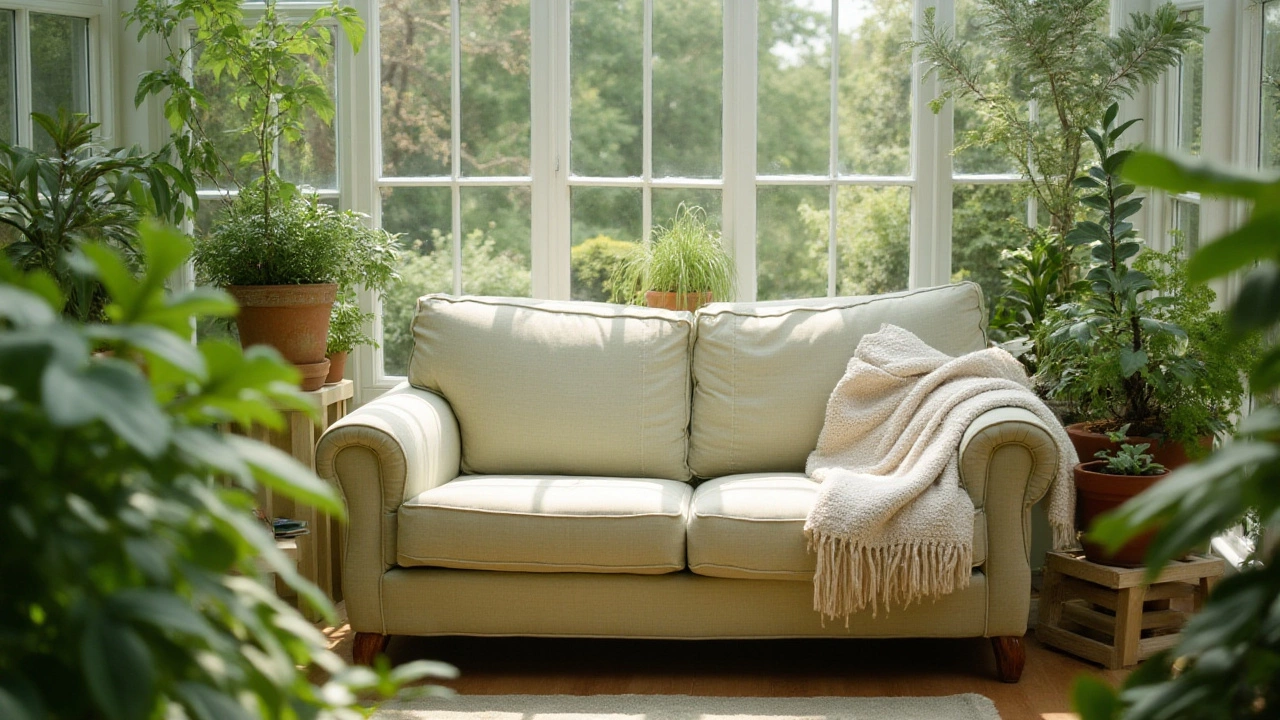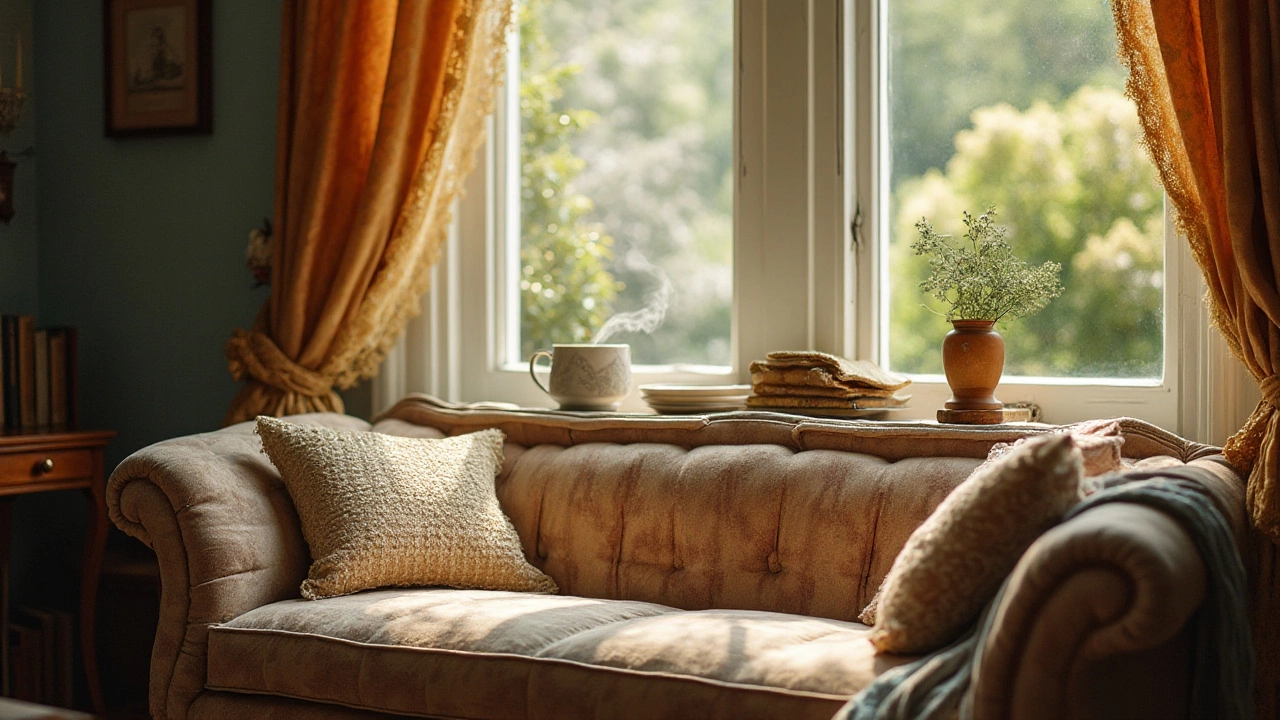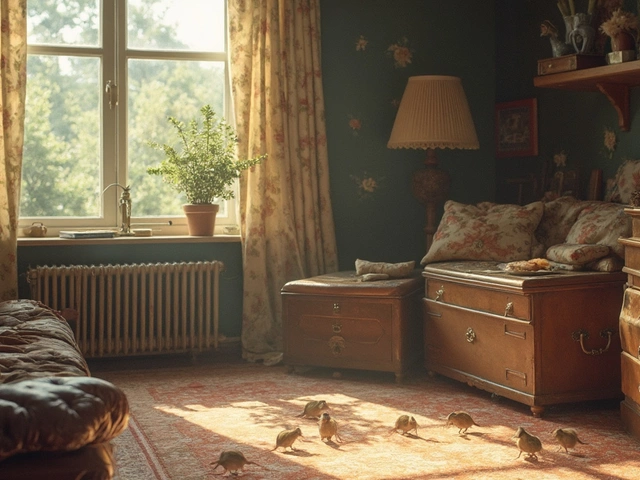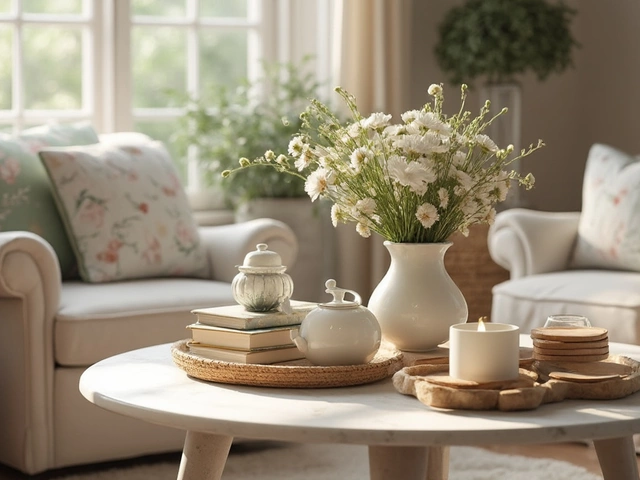Couches are more than just a place to sit; they're the unsung heroes of our living spaces, often holding the stories and memories of gatherings with family and friends. Yet, like all things, couches have a lifespan, and deciding when to replace them can be tricky.
Understanding how long your couch should last requires examining its current state, recognizing signs of wear, and knowing what affects its longevity. With a few helpful tips, you can make an informed decision about whether it's time to shop for a new couch or find ways to extend the life of your existing one.
- Assessing Your Current Couch
- Factors Affecting Couch Longevity
- Signs It's Time for a New Couch
- Tips for Extending Your Couch's Life
Assessing Your Current Couch
Before deciding whether to replace your couch, it’s essential to take a good look at what you currently have. Start by examining the cushions. Are they sagging or losing their shape? Cushion integrity is a significant factor in the comfort and lifespan of your furniture. Over time, foam can break down, leading to discomfort and an unattractive look. To test, remove the cushions and see how easily they flatten and spring back. A quick bounce back is a sign of good health; however, a stubborn, sunk-in cushion suggests a replacement might be needed.
The frame of the couch deserves equal attention. Check its stability and strength. A creaking or wobbling frame often indicates internal damage that could worsen over time. Pay attention to any odd noises, as they may be a sign that the materials inside are settling in a way they shouldn’t—or even breaking. Most modern couches have wooden or metal frames, so look for signs of wood splitting or metal bending, especially at key joint points.
Fabric or leather condition offers further clues about whether your furniture has seen better days. Notice any tears, fraying, or significant stains? These are more than just cosmetic concerns; they could be indicators of material fatigue. For leather couches, look for signs of fading or cracking. Fabrics can pill or wear out in high-contact areas like armrests and seats, signaling it might be time to consider a new purchase.
Your couch's odor can also reveal a lot about its condition. Any persistent or unusual smells that don't dissipate with a regular clean should not be ignored. They could be trapped in the fabric or the frame itself, especially if your couch has withstood years of food spills, smoke, or pet odors. According to advice from
the National Home Furnishings Association, "A well-kept couch can last up to 15 years, depending on its use and care routine."This suggests that while cleaning helps, sometimes it’s simply time to move forward with a replacement.
Importance of Functionality
When evaluating an old couch, functionality is as crucial as aesthetics. Ask yourself whether the couch still serves your needs in terms of comfort and seating capacity. Over time, families grow, and seating requirements can change. If it feels overcrowded during gatherings or simply doesn’t fit with your lifestyle anymore, that’s a valid ground for replacement. A couch should be more than just a fixture; it should enhance its surroundings.Taking the time to thoroughly assess your current couch can save you financial investment in the long run. By understanding its current state and needs, you’ll make a more informed decision on whether to hold on a little longer or take that exciting step into acquiring something new. So clip those coupons and monitor those furniture sale events—but first, give your existing couch the analysis it deserves.

Factors Affecting Couch Longevity
The lifespan of your couch depends on a multitude of factors, each playing a part in how long you can realistically expect it to last. One of the primary considerations is the quality of materials used in its construction. The type of wood used for the frame, the density of the foam in the cushions, and the durability of the fabric or leather upholstery all contribute to the couch's longevity. Hardwood frames and high-density foam are often signs of a well-made couch that can withstand years of use. It’s not merely about the materials but also how they're put together, which is why craftsmanship often counts as much as what goes into the couch.
Another critical factor is how often and how the couch is used. Think of the couch in a bachelor pad facing nightly marathons of gaming versus the spare couch in a little-used sitting room. Unsurprisingly, the family room couch facing the grind of daily life may show signs of wear long before its less-used counterpart. High-traffic seating areas require couches with reinforced structures and materials that perform well under constant use. Additionally, the level of care and maintenance plays a significant role. Regular cleaning, rotation of the cushions, and quick addressing of spills can extend a couch's life considerably.
According to furniture expert Jane Doe, "A sturdy couch is an investment. Regular maintenance and choosing durable materials can increase its lifespan by up to 50%."
The environment in which your couch resides can also have an impact. High humidity levels, for example, can cause certain materials to deteriorate faster. Sunlight exposure might fade fabrics over time, especially if your couch spends its days basking in a room with large windows and no protective curtains or blinds. It’s essential to keep these environmental factors in mind and take steps like rearranging furniture or drawing curtains during peak sunlight hours.
Finally, personal factors such as lifestyle habits contribute heavily to a couch's wear. Households with pets and children might find their couches subject to more stress than a single adult's home. Pet claws, active children, or even just the tendency to eat meals on the couch can contribute to greater wear and tear. Consideration of all these factors can help determine when it's time for a replacement, not to mention guide you in making more strategic purchases in the future, aligning durability with your household's specific needs.

Signs It's Time for a New Couch
If your couch creaks like an old barn door every time you sit down, it might be trying to tell you something. Sound is often the first noticeable sign that your couch is nearing the end of its lifespan. A suspicious creak or groan likely means the frame or springs have weakened. While some noises might just indicate loosening joints that can be tightened with a little handy work, persistent sounds may point to structural issues that are not worth mending. Alongside these auditory warnings, the feel of the couch can also signal it's time for change. If you notice the cushions have lost their bounce back, and the couch is more like a soft pancake that swallows you, that's a hint. Cushions are meant to provide support, and when they fail to do this, both comfort and posture suffer.
The fabric itself is another storyteller. Observe it closely — is the material thinning or are there visible tears and worn patches? Couch replacement might be on the horizon when these cosmetic issues become eyesores. Stains and odors that refuse to budge despite thorough cleaning can also play into your decision. Especially in homes with pets or kids, the upholstery tends to bear the brunt of spills and mishaps. Sometimes, these stains penetrate deeply, becoming a lasting part of the couch's character. Older couches can develop an all-over faded look from sun exposure, making even a well-maintained couch appear dilapidated. A significant depreciation in the fabric's appearance contributes to an unwelcoming ambiance.
Structural Integrity
Beyond the fabric and cushioning, the real heart of the couch — the frame — must be examined. A sagging frame or an uneven base can be a sign of a faulty structure. This can make the couch not only unattractive but potentially unsafe. When frames break, there's a risk of collapse. Materials like wood can warp or crack over time, particularly if exposed to moisture or weight well beyond their design limitations. If you happen to feel any wobbliness or see any sagging, these are red neon signs. They inform you that replacement is more economical and safe than pursuing repairs, which might only offer temporary relief.
Another tell-tale sign is the absence of comfort — sitting shouldn't be a chore. If you find yourself constantly adjusting your position or placing extra pillows for support, it might be your couch's subtle hint that it's no longer serving its purpose. An ergonomically sound couch should support your back and ensure comfort during prolonged lounging. As your couch ages, its design may also become outdated, not just in terms of aesthetics, but in functionality as well. The latest designs offer features like built-in USB ports or recliners, aligning with modern lifestyles.
As you evaluate your couch, consider the usage frequency and the number of people in your household. Heavily trafficked couches in bustling family rooms might wear out before those in a seldom-used living room. Always tailor your assessment to your specific environment. Remember, saying goodbye to an old friend like a couch can indeed be bittersweet, but the promise of fresh comfort and style in a new couch replacement is sure to lift your spirits.

Tips for Extending Your Couch's Life
Every couch, regardless of how high-end or budget-friendly it may be, will eventually show signs of aging. Yet, with a little care and attention, you can extend the lifespan of your beloved seating companion. The first and perhaps most obvious way is by regularly cleaning it. Start by vacuuming your couch at least once a week. This helps in removing crumbs, dirt, and dust particles that could otherwise settle deep into the fabric, leading to premature wear. Baking soda is an excellent natural cleaner that you can easily sprinkle, leave for a while, and then vacuum away. Alongside vacuuming, consider using fabric protectors that can shield your couch from stains and spills, especially if your home is bustling with activity.
Positioning of your couch plays a significant role in its longevity too. Did you know that placing your couch in direct sunlight can cause the colors to fade much faster than expected? It's true; sunlight, over time, bleaches most fabrics. Try to situate your couch in a shaded part of the room or use curtains and blinds as protection. If moving your couch isn't possible, consider couch covers when light is at its most intense. They might not be stylish, but they protect. And when we talk about protection, let’s not overlook the practical habit of rotating and flipping the cushions regularly. This practice helps in distributing the wear and keeps your cushions even, maintaining that comfortable seating structure everyone loves.
A thorough check of the couch frame and the supporting springs should be a part of your maintenance routine too. At least twice a year, flip over the couch and check for any loose bolts or weakened springs. With some basic tools, you can often tighten fittings and ensure everything is holding firmly. If your couch is a wooden one, keep an eye out for termites – a piece of furniture’s worst enemy. Regular inspections might seem cumbersome, but they'll keep the structural strength of your couch intact for a long time. On a note from the
American Furniture Manufacturers Association, "Periodic checks and minor repairs can prolong the lifespan of your furniture by several years." This hands-on approach not only saves money in the long run but also keeps your seating secure.When it comes to fabrics, the choice you make initially can dictate how long your couch stays in pristine condition. Some fabrics naturally wear better than others. Natural fibers like cotton and linen may fray or fade faster, whereas synthetic materials like polyester and microfiber are typically more resilient. If you're in the market to buy a new couch or plan to re-upholster, think about the pros and cons of different materials, not just the aesthetics or how they feel. Investing in a high-quality fabric at the start could mean several more years of use before replacing your couch becomes necessary.
Lastly, consider the minimalist approach of using less to make your furniture last longer. Encourage everyone in your household to treat the couch with respect, understanding it is not just a piece of furniture, but a daily gathering space that needs mindfulness to keep it going strong. Whether it’s not allowing sharp objects or avoiding heavy pressure points, these conscious efforts can significantly reduce sudden wear and tear. Implementing these straightforward yet effective tricks can certainly lead to a longer, happier life for your couch, saving you frequent trips to the store.



